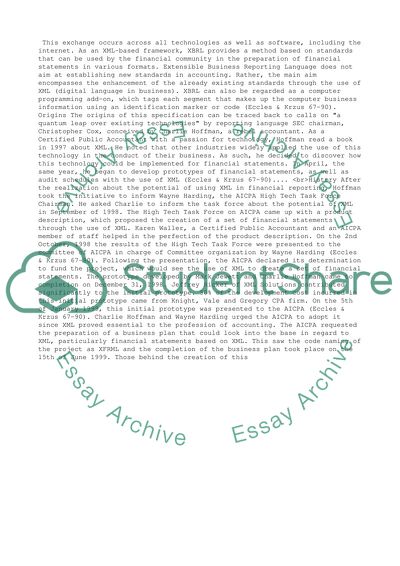Cite this document
(“XBRL (eXtensible Business Reporting Language) Term Paper”, n.d.)
XBRL (eXtensible Business Reporting Language) Term Paper. Retrieved from https://studentshare.org/business/1453991-xbrl-extensible-business-reporting-language
XBRL (eXtensible Business Reporting Language) Term Paper. Retrieved from https://studentshare.org/business/1453991-xbrl-extensible-business-reporting-language
(XBRL (eXtensible Business Reporting Language) Term Paper)
XBRL (eXtensible Business Reporting Language) Term Paper. https://studentshare.org/business/1453991-xbrl-extensible-business-reporting-language.
XBRL (eXtensible Business Reporting Language) Term Paper. https://studentshare.org/business/1453991-xbrl-extensible-business-reporting-language.
“XBRL (eXtensible Business Reporting Language) Term Paper”, n.d. https://studentshare.org/business/1453991-xbrl-extensible-business-reporting-language.


